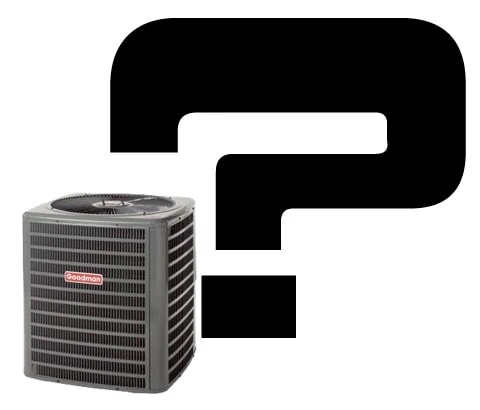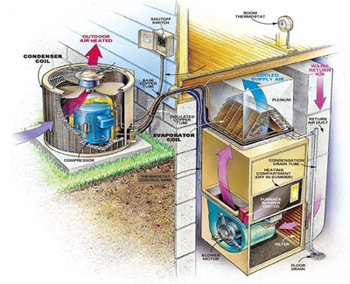You may be an expert on air-conditioning technology. I am definitely not, but I’ve been diligently studying HVAC systems in order to qualify in my state as a licensed home inspector. I’ve been taking a crash-course in all aspects of the home. A lot of the material I already knew, but a lot of the rest has been an eye-opening experience. In addition to the inch-thick Home Inspection textbook I’ve been poring over, I keep running to the internet for additional information and clarification. This was necessary when I began studying air-conditioning systems. Since I had to spend a while web-surfing to find what I considered to be the most helpful resources, I figured I’d share them with you guys to save you some time, in case you’re interested in studying these systems yourselves.
Air-cooled systems: In a nutshell, air-conditioners work on the concept of evaporation, just like the cool sensation you get when rubbing alcohol evaporates off your skin. Instead of alcohol the air conditioner uses a refrigerant such as freon to circulate through the system. Pipes take the liquid refrigerant inside the home to an evaporator coil. A fan blows warm air over the cold coils and into the home. As this forced air transfers cold into the living space it also transfers heat to the refrigerant. The liquid refrigerant changes to gas in the evaporator. A compressor moves the gas outside the home to a condenser unit. The condenser has a second coil as well as a fan that blows air over the gas refrigerant, releasing heat from the refrigerant and returning it to a liquefied state. The refrigerant is again circulated through the system to the evaporator to continue the cycle.
While studying, I discovered an awesome detailed, full-color diagram of the components of an air-conditioning system at Ductpro.com. The same web page also offers a nice overview of how an AC system functions. Click the pic below to jump to the original web page with a higher quality graphic and more information.
I also found a HowStuffWorks video on YouTube (embedded below), which skims over the very basics but leaves out some pretty big holes. It took a combination studying the detailed diagrams, the written explanations, plus rewatching the video a few times for everything to click, but I think I’ve got the gist of the systems now. I hope it helps for you, too. — M. Weber




